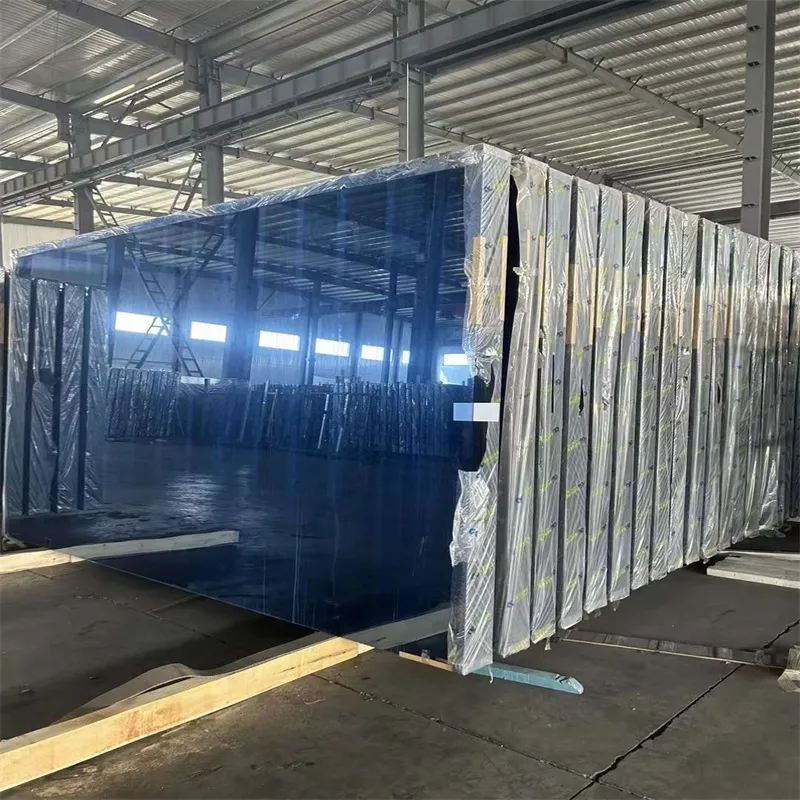Dec . 05, 2024 01:07 Back to list
Process and Quality Control in Tempered Glass Manufacturing Techniques and Innovations
The Process of Tempered Glass Production
Tempered glass, also known as toughened glass, has become an essential material in modern architecture, automotive applications, and interior design due to its superior strength and safety features. The production process of tempered glass is intricate, involving several crucial steps that ensure the glass meets the necessary quality and performance standards.
Raw Material Selection
The journey of tempered glass begins with the selection of high-quality raw materials. The primary component is silica sand, which is mixed with other materials like soda ash and limestone to form glass. This mixture is heated in a furnace at high temperatures, usually between 1400-1600 degrees Celsius, until it melts and becomes a molten glass.
Forming the Glass
Once the raw materials are melted, the molten glass is shaped into sheets. This is typically done through either the float glass process or the sheet glass process. In the float glass process, the molten glass is poured onto a bed of molten tin, causing it to spread out and form a flat, even surface. After cooling to a manageable temperature, the glass is cut into sheets of desired sizes.
Annealing
Before the glass can be tempered, it undergoes a process known as annealing. During annealing, the glass is slowly cooled in a controlled environment to relieve internal stresses that may have developed during forming. This step is crucial as it ensures the stability of the glass, preventing it from breaking during the subsequent tempering process.
The Tempering Process
The real transformation of ordinary glass into tempered glass occurs during the tempering process. The annealed glass sheets are placed in a tempering oven, where they are heated to temperatures between 600-700 degrees Celsius. Once uniformly heated, the glass is rapidly cooled using jets of cold air in a process called quenching. This rapid cooling causes the outer surfaces of the glass to contract while the inner core remains expanded, creating a state of compression on the surface.
tempered glass production

The result is a glass that is significantly stronger than its untempered counterparts. Tempered glass can withstand higher impacts and thermal stresses, making it ideal for areas prone to breakage, such as shower doors, glass facades, and car windows.
Safety and Breakage Patterns
One of the primary reasons for the popularity of tempered glass is its safety features. In the event of breakage, tempered glass shatters into small, blunt pieces rather than sharp shards, reducing the risk of injury. This characteristic is particularly important in applications where safety is a concern, such as in buildings, vehicles, and public spaces.
Quality Control
Throughout the production process, quality control measures are implemented to ensure that the tempered glass meets industry standards and regulations. Each batch of glass is tested for durability, thermal resistance, and optical clarity. This rigorous testing ensures that the final product is not only safe but also aesthetically pleasing, satisfying the demands of architects and designers alike.
Applications of Tempered Glass
The applications of tempered glass are vast. In architecture, it is commonly used in large windows, facades, and skylights due to its ability to withstand high wind pressures and thermal fluctuations. In the automotive industry, tempered glass is utilized for side and rear windows, providing safety and visibility. Additionally, tempered glass finds its way into everyday products, including tablets, smartphones, and kitchenware.
Conclusion
In summary, the production of tempered glass is a complex process that requires precision and attention to detail at every stage, from raw material selection to quality control. Its unparalleled strength, safety features, and versatility have made it a favored choice in numerous industries, reflecting the advancements in glass technology. As demand for tempered glass continues to grow, innovations in production techniques are likely to shape the future of this crucial material, expanding its possibilities even further.
-
Safety and Style with Premium Laminated Glass Solutions
NewsJun.24,2025
-
Reinvents Security with Premium Wired Glass
NewsJun.24,2025
-
Premium Float Glass Line for Modern Architecture
NewsJun.24,2025
-
Low Emissivity Glass for Energy-Efficient Architecture
NewsJun.24,2025
-
High-Performance Insulated Glass Solutions for Modern Architecture
NewsJun.24,2025
-
Elevates Interior Style with Premium Silver Mirror
NewsJun.24,2025
Related PRODUCTS














